Despite the name, Cedar Bog technically isn’t a bog, but a fen! The main difference is the saying ‘fens flush, bogs clog’ (as the park staff taught us). Bog water comes from rain and stays in the ground because of peat, moss, and other decaying matter that doesn’t allow for much drainage. Water only leaves through evaporation. However, fens get their water from both rain and from ground water springs. Small streams help drain off the water, which gets replaced again. In this region, the limestone in the non-glaciated soil that creates a basic environment that makes the water clear (as opposed to western Ohio which was glaciated, there’s less limestone in the area, and the soil is more acidic than basic).
As always, identifications were made with the help of: Peterson Field Guide for Trees and Shrubs, his guide to Ferns, Newcomb’s Field Guide for Wildflowers, and professor Klips and TA Ash.
For my personal project, I was tasked with finding two monocots (monocotyledon). “But Natalie, how do I know the difference between monocots and dicots?” The best hint I use to distinguish the two is simple; monocots’ petals and flower parts come in sets of threes while dicots’ parts come in sets of fours or fives.
The first of my two monocots is the Virginia Iris or Southern Blue Flag (Iris virginica). The United States Department of Agriculture’s Natural Resources Conservation Service page says that the roots were made into a skin salve by the Natives (VIRGINIA IRIS (usda.gov)). The flowers are a beautiful blueish purple with yellow centers, and they’ve adapted to survive in marshes/swamps, so Cedar Bogs is a perfect place to set up camp. Personally, they seem quite large and tall compared to what I think of as ‘regular’ irises. The park had an entire swatch of land packed full of these. It was definitely one of my favorites!
My second pictured monocot is the large-flowered Trillium (Trillium grandiflorum); the scientific name literally meaning big-three-part-funnel-shaped-flower. Due to the increasing population of White Tailed Deer, the US Forest Service says their numbers are adversely impacted (Great White Trillium (usda.gov)). Now you may see that name and think ‘hmm, that sounds familiar. I wonder where I’ve seen that name before?’ Suprise! It’s also pictured in my Hocking Hills blog post. I love seeing the same species of flower in multiple different places, especially one’s pretty spread out. Since the flower is an acid lover, it does well in the Cedar ‘bog’/fen since the soil is also acidic (thanks to the limestone as mentioned at the beginning of this page). Another cool find!
The next four plants mentioned are ones that are being specially conserved by the park. Each has been assigned a different coefficient of conservation (CC) by the Ohio Department of Natural Resources to describe how adaptable the plant is to changes to their environment. The higher the number, the less tolerance they have to disturbances or changes, and vice versa. There were many plants that were being conserved at the park, but alas only four can make my blog page.
The first conserved plant is the Climbing Prairie Rose (Rosa setigera). It has a CC of four; this means that is decently tolerable to changes in its environment. I’m always a sucker to talk about flowers; even if they’re small, white ones. A classic looking flower is always appreciated. That and I love native plants as well, and this class is going to help me figure out which ones to plant in my garden so I don’t have to worry about spreading invasive plants that appear pretty.
The next conserved plant on the list is the Ohio Spiderwort (Tradescantia ohiensis). I am not sure how it got its name, perhaps spiders like to live in it? This plant’s CC is a five, so it sits in the middle of the spectrum for adaptability. Ohio Spiderwort was the first plant to greet us on the start of our boardwalk journey. Again, I couldn’t pass up on showing another pretty flower.
Second to last is the Shrubby cinquefoil (Potentilla fruticosa), which we all had a blast trying to figure out the spelling for (thanks France). These little yellow flowers kind of remind me of buttercups, but do know they are in the Rose family, not the Ranunculus family. For me, the roots and stalks don’t give me buttercup vibes. This plant has a CC of ten, meaning it in incredibly vulnerable to disturbances and changes in its environment. These kinds of plants usually only do well under close watch and care; they are not typically found out in the wild (as humans have changed so much of the land over the last few centuries). At least they have a good home here.
Last on our conservation list is the Northern White Cedar (Thuja occidentalis) and is sometimes referred to as ‘Arbor Vitae’ (check out my Trees! page for more about the name). The Northern White Cedar is actually a fairly dominant tree in the park, which is strange as its CC is a nine, meaning that this plant is not great at adapting to change. One would expect it to be present under the care of the park, but it’s cool to see it so numerous in one place. It makes me feel cool to have one in my backyard (even if it was artificially placed at some point). Something I forgot to mention on my Trees! page is that something else has the same ‘Arbor Vitae’ name, but this one is within my true field of passion: human anatomy. The white matter of the cerebellum in the brain, which appears to branch into the gray matter like a tree. Since the cerebellum is crucial for functionality of life, it was nicknamed the ‘tree of life’, or ‘arbor vitae’. Neat to see the crossover of botany and anatomy.
Next on the agenda is talking about the kinds of ash trees we came across in the park. I have two true ash trees identified, but as an added bonus, I have a shrub with ash in the common name that is not within the Fraxinus genus. Ash trees are easy to recognize as they are the only trees with opposite, feather-compound leaves.

The ash trees I have identified and photographed are Black Ash (Fraxinus nigra), Green Ash (Fraxinus pennsylvanica), and the bonus shrub: Northern Prickly Ash (Xanthoxylum americanum). Since the shrub has alternate leaves instead of opposite leaves, we know it isn’t in the Fraxinus genus, but like I said, it’s bonus content. The way to tell the Black and Green Ashes apart is whether the leaves are stalked or not (or sessile if you want to impress people). Green Ash leaves are stalked and are grouped in bunches of 5-9 leaves, which Black Ash leaves are sessile and are grouped in bunches of 7-11. Now you can flex on your friends by identifying Ash trees down to the species.
Floristic Quality Index with swamp forest and sedge meadow plants.
The format for the last section is as follows:
Scientific name: Common Name, wetland status, and coefficient of conservation
Swamp Forest data and FQAI: 2.386
- Caltha palustris: Marsh-Marigold, Obligate Wetland Plant, CC=6
- Iris viginica: Southern Blue flag, Obligate Wetland Plant, CC=6
- Lindera benzoin: Spice Bush, Facultative Wetland Plant, CC=5
- Senecio aureus: Golden Ragwort, Facultative Wetland Plant, CC=4
- Symplocarpus foetidus: Skunk Cabbage, Obligate Wetland Plant, CC=6
- Ranunculus septentrionalis: Swamp Buttercup, Facultative Wetland Plants, CC=4
Sedge Meadows data and FQAI: 4.419
- Dasyphora fruticosa: Shrubby Cinquefoil, Facultative Wetland Plants, CC=10
- Drosera rotundifolia: Rounded Leaf Sundew, Obligate Wetland Plants, CC=7
- Betula pumila: Swamp Birch, Obligate Wetland Plants, CC=10
- Valeriana uliginosa: Swamp Valerain, Facultative Wetland Plants, CC=10
- Toxicodendron vernix: Poison Sumac, Obligate Wetland Plants, CC=7
- Utricularia minor: Lesser Bladderwort, Obligate Wetland Plants, CC=6

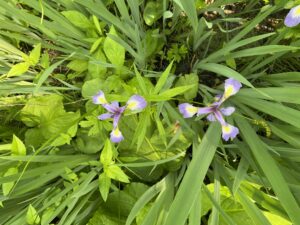
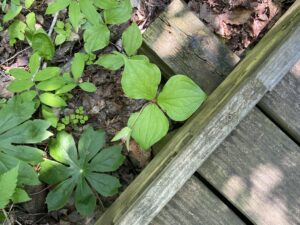
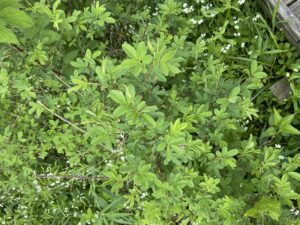
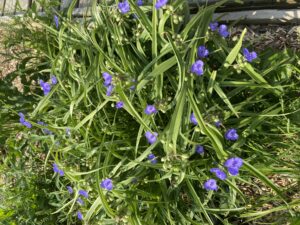
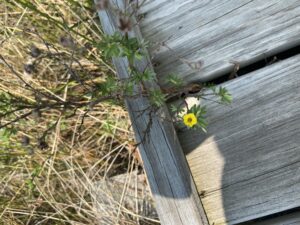
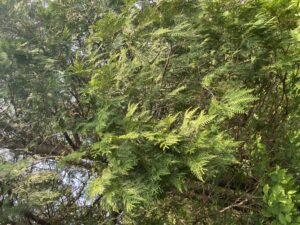
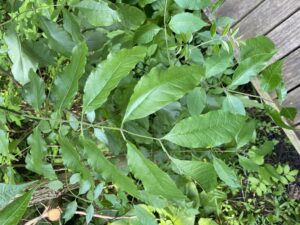
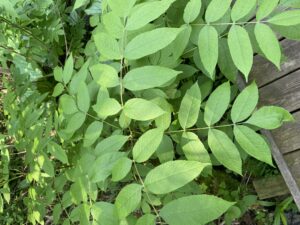
Comments
Cedar Bog (that isn’t a bog) — No Comments